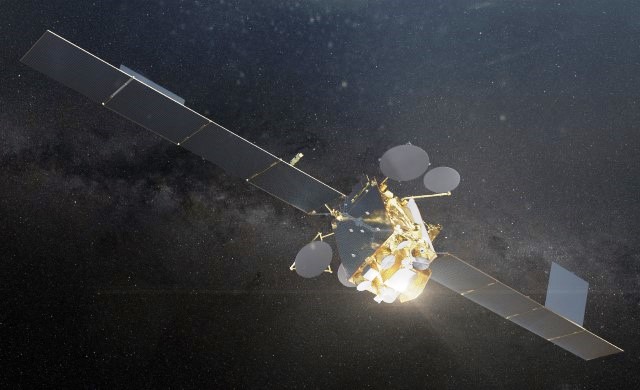The European Space Agency’s Ariane 5 spacecraft launched the second satellite of France’s new Syracuse IV constellation from French Guiana. Syracuse IV is a military satellite communications (SATCOM) constellation that comprises two satellites, 4A and 4B that will support the communications of the French Armed Forces around the world.
4A and 4B satellites were built by a consortium, Thales Alenia Space and Airbus. Thales was responsible for the Syracuse 4A, which launched in 2021, and the payloads for both 4A and 4B. Meanwhile, Airbus was in charge of the 4B satellite, based on the all-electric Eurostar platform, and supplies key components for the two payloads.
SYRACUSE 4B features anti-jamming, to enable service continuity and resilience, cyber-defence and data encryption technologies. It was built on Airbus’ Eurostar E3000 platform in its full-electric variant, equipped with in-orbit proximity surveillance, and is embarking the same payload as SYRACUSE 4A, built by Thales Alenia Space with key components provided by Airbus.
According to Thales, SYRACUSE 4A and 4B will deliver increased capacity and enhanced functionality for the French Armed Forces, including higher throughput and flexibility, along with a broader coverage area. The increased flexibility will ensure the satellites can meet the needs of forces deployed anywhere in the coverage area, while also managing its X-band and Ka-band resources.
“Observation, signal intelligence, space situational awareness, and of course secure communications across key theatres of operation, are paramount for a nation’s autonomy and freedom of action,” commented Jean-Marc Nasr, Head of space systems, Airbus. “Airbus is proud to be a trusted partner of the French Armed Forces: thanks to SYRACUSE 4B, and other programmes, we support our national ambitions and capabilities in all these fields, today and in the decades to come!”
Syracuse 4B will join Syracuse 4A in orbit, forming the Syracuse IV satellite segment, which replaces the previous Syracuse III generation (3A and 3B).
The satellite will be able to support operations led by NATO and other allied nations.

